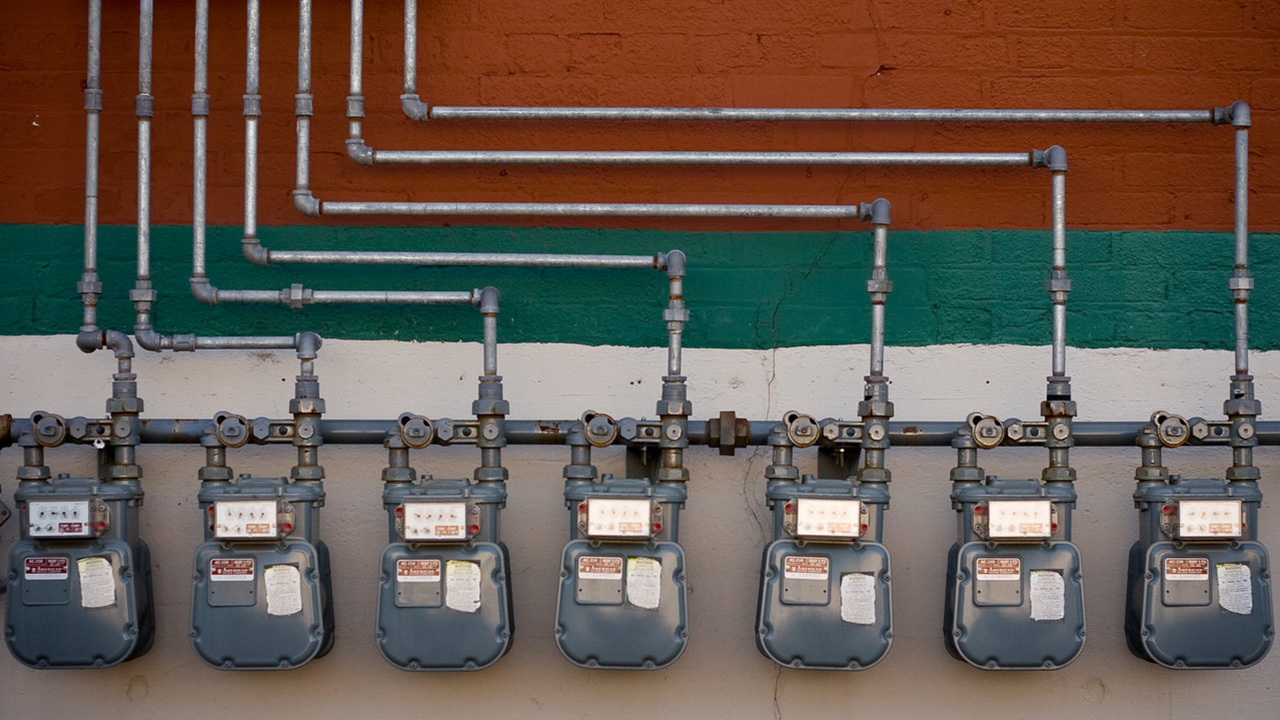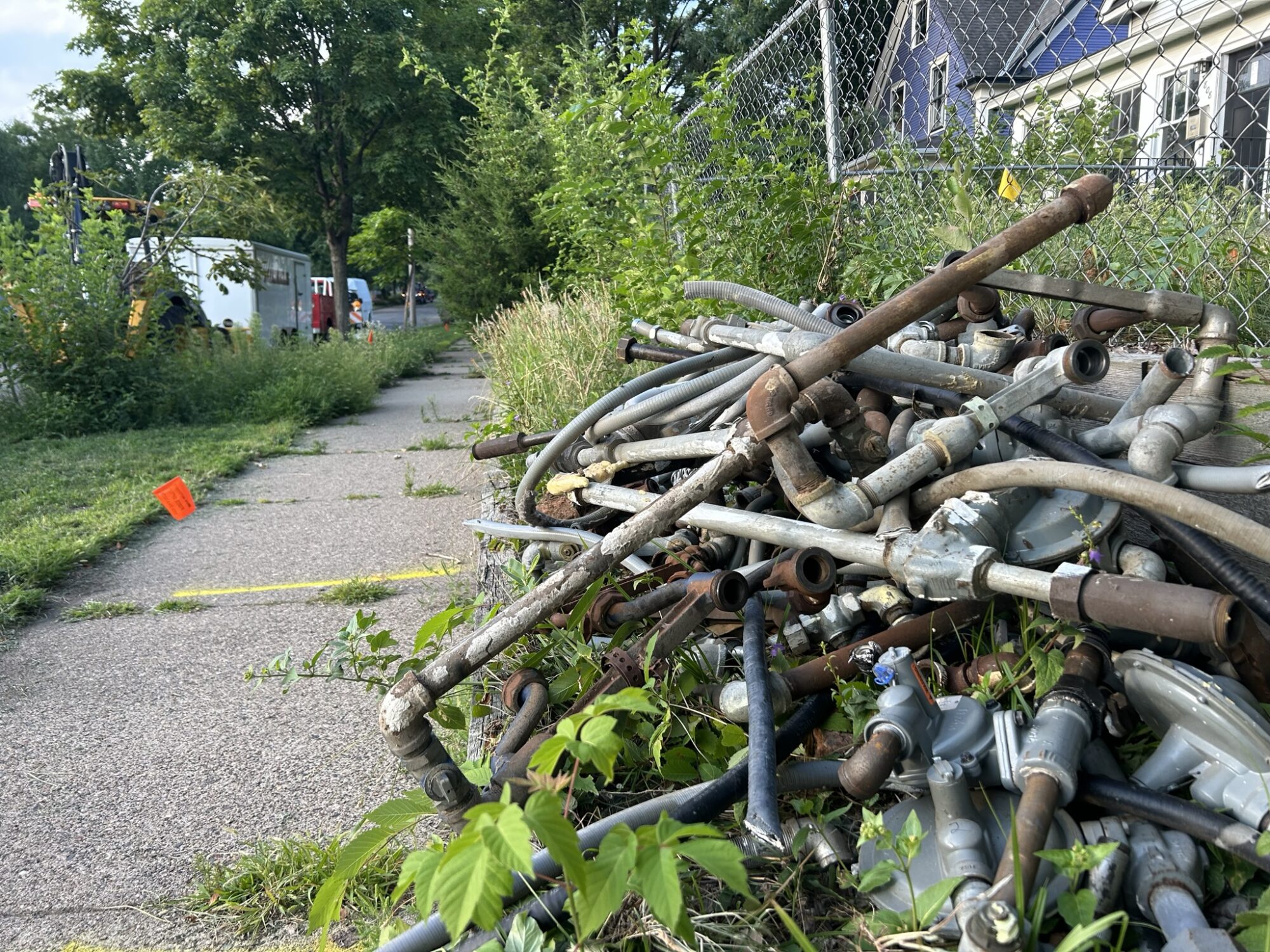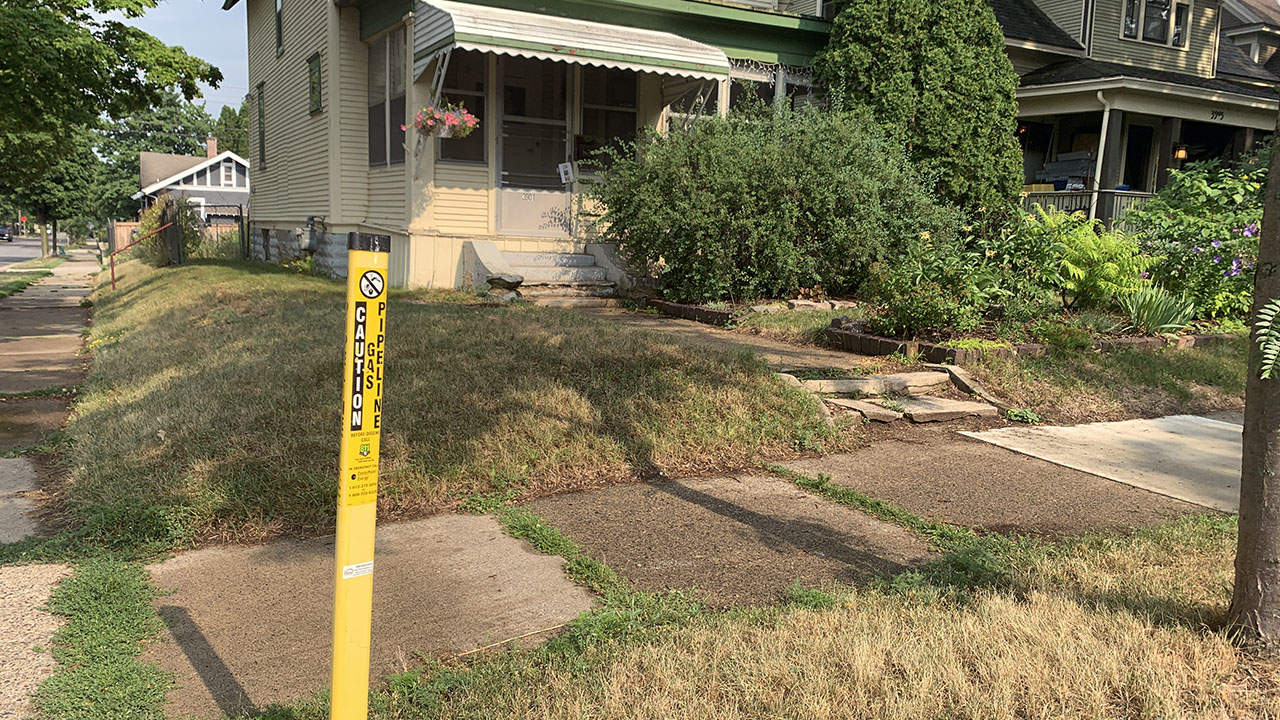
As Fresh Energy works to decarbonize Minnesota and the Midwest by midcentury, we recognize that reducing emissions from the natural gas distribution system is critical to reaching Minnesota’s overall emissions reduction targets. A key way Fresh Energy works to address these emissions is through our regulatory work at the Minnesota Public Utilities Commission (Commission), an important arena where many of Minnesota’s energy decisions are made.
In January 2025, the Commission issued a notice of scope and timeline for the Future of Gas docket (#21-565), which will include a comment period for line extension policy that the Commission has stated it intends to issue in March 2025. In the Future of Gas docket, the Commission is tasked by the Minnesota Legislature with evaluating “changes to natural gas utility regulatory and policy structures needed to meet or exceed Minnesota’s greenhouse gas emissions reductions goals.” The Future of Gas docket was initiated in 2021, and this will be the first comment period on a regulatory or policy structure in the docket.
The natural gas distribution system is a network of pipes that crisscross through our cities and neighborhoods, and they eventually end up delivering gas into our homes, schools, and workplaces. This system (and its corresponding emissions) grows via line extension policy — the policy that, as the name would suggest, establishes the rules and procedures around expanding the gas system to add new customers, including, importantly, who pays the cost for extending the physical gas line and how much they pay.
Line extensions encompass the extension of gas distribution mains, the service line that connects the main to the meter, and the meter itself. Minnesota gas utilities traditionally have subsidized costs of extending service to new customers, called “line extension allowances.” However, Fresh Energy feels that this policy needs to be revisited so that a new or expanding customer is paying their fair share of this new infrastructure cost and the bill doesn’t fall to existing customers to subsidize. Not only is this the right thing to do from a fairness perspective, but now that it’s a shared societal goal to reduce emissions from the gas system, incentivizing customers to add to the gas system no longer makes sense.
How do line extension policies work?
Gas utilities allow potential new customers (such as builders of a new housing development) to connect to its system for free, with all other customers covering the costs to add the new customer up to a certain length of pipe via the “free footage allowance.” For example, Xcel’s free footage allowance is 80 feet for new gas main extensions and 75 feet for new service line extensions. Meters are always paid for by all customers, not the individual customer.

Why should we reevaluate and phase out line extension allowances?
Historically, the rationale for this line extension policy assumes that the benefits of adding a new customer (i.e., that the customer will be buying gas for decades into the future) to the system outweigh the costs to add that customer over time. But that historical assumption — that it is beneficial to increase the size of the natural gas system — is now being challenged for climate and financial reasons.
The natural gas sector is a significant and growing source of climate-causing emissions in Minnesota. According to the latest data from the Minnesota Pollution Control Agency, residential and commercial natural gas emissions have increased by 21% and 48%, respectively, since 2005. To help curb these emissions, Minnesota law has established goals to reduce these emissions and to reduce the usage of natural gas.
In addition to Minnesota’s economy-wide greenhouse gas (GHG) reduction targets of 50% by 2030 and net-zero emissions by 2050, the Minnesota Climate Action Framework has a goal to reduce GHG emissions from existing buildings by 50% by 2035, compared to 2005 levels. Additionally, state laws like the Natural Gas Innovation Act (NGIA) and the Energy Conservation and Optimization (ECO) Act have codified electrification and fuel-switching from gas to electricity as state goals and both laws are poised to increase adoption of electric appliances.
Current line extension policies that are explicitly designed to expand the gas system make it difficult to achieve these goals.
Line extension policies also pose a growing financial risk for customers if we don’t update the policy. As we move toward more electrified end uses to heat our homes and water and cook our food, we will rely less and less on the natural gas system to meet those needs. But since utilities recover assets like pipes over many decades through the sale of gas, the amount of time before the new pipes are “paid off” is likely much longer than currently assumed. Reduced gas use in the future could make it more difficult for utilities to recover these sunk costs on the system.
In summary, gas utilities’ current line extension policies are out of step with current state law and policy. Line extension policy places an undue burden on both current and future customers and distorts the true cost of connecting to the gas system by subsidizing it for the gas utilities. To be clear, Fresh Energy is not advocating that utilities should be restricted from extending new service or expanding existing service – but we believe that when that occurs, it should not be an incentive or advantage to the new or expanding customer and should reflect updated assumptions and forecasting of natural gas use. Updating the policy in this way is both fairer and more aligned with Minnesota’s GHG goals.
How have other states reformed line extension policies?
Extension policies are being re-examined by state public utility commissions across the country. Several commissions have ordered for the phase out and elimination of gas utility line extension policies that incentivize gas expansion. The table below summarizes some of these reforms.
Gas line extension allowance eliminations and reforms in other states:
| California | The California Public Utilities Commission eliminated residential gas line extension allowances in 2022 via an Order in its building decarbonization proceeding. It then took the additional step to eliminate electric line extension allowances for new construction buildings using natural gas. |
| Colorado | The Colorado Public Utilities Commission issued a decision modifying the state’s approach to gas line extension allowances in late 2022 which was then superseded by the legislature in May 2023 (SB23-291), effectively eliminating these allowances. |
| Connecticut | The Connecticut Public Utilities Regulatory Authority’s April 2022 decision in its gas expansion proceeding ended the state’s System Expansion Program, a program that provided incentives to expand the gas system. |
| Oregon | In an October 2024 Order, the Oregon Public Utilities Commission directed Northwest Natural, the state’s largest gas utility, to phase out its residential line extension allowances for new customer connections, starting November 1, 2024 with elimination by November 1, 2027. |
| Massachusetts | The Massachusetts Department of Public Utilities’ (DPU) December 2023 Order 20-80 set forth a new strategy to guide the evolution of the natural gas distribution industry to clean energy. In the order, the DPU directed the state’s Local Distribution Companies to begin reviewing their tariffs, policies, and practices related to new gas service connections. In February 2025, the Massachusetts DPU proposed requiring customers who request new gas service to cover the full cost of any needed line extensions, which effectively would end the gas utilities’ practice of spreading these costs across their rate base. For bonus content, check out this recent Volts podcast episode with the Chair of the Massachusetts Department of Public Utilities on their transition away from gas. |
| New York | New York has a unique gas line extension policy called the “100-foot rule.” Under New York statute, utilities are required to cover the cost associated with connecting a new gas customer if they are within 100 feet of the existing distribution system. One of the aims of the NY HEAT (S4158) bill is to eliminate this rule from statute to enable the New York Public Service Commission to eliminate gas line extension allowances for new service. |
| Washington | The Washington Utilities and Transportation Commission’s rulings on Avista and Puget Sound Energy’s 2022 rate cases required the phase out of gas line extension allowances with complete elimination by January 1, 2025. Cascade Natural Gas would follow a similar two-year phase out with elimination by March 2027 if the proposed settlement is adopted. |
Additionally, broader “Future of Gas” proceedings in states like Maryland and Illinois have identified line extension allowances as a potential topic to investigate.
What are Minnesota’s gas utilities’ current line extension policies? How has Fresh Energy previously engaged on line extension policy at the Commission?
Fresh Energy has engaged on line extension policy across dockets at the Commission for several years. Previously, Fresh Energy, in partnership with Minnesota Center for Environmental Advocacy (MCEA) as the Clean Energy Organizations, actively engaged in several gas utilities’ rate cases to challenge the current gas utility policy for gas line extensions. These included CenterPoint’s 2021 rate case, Xcel’s 2021 rate case, and Minnesota Energy Resource Corporation’s (MERC’s) 2022 rate case. Check out this blog post for a refresher on rate case proceedings.
These rate cases deferred the discussion of line extension policies for each of Minnesota’s three largest rate-regulated natural gas utilities to the Future of Gas docket. However, no action has been taken in the docket to address these policies until now.

Below we provide further details on how each of the utilities’ line extension policies were addressed in the 2021 and 2022 rate cases.
CenterPoint Energy
In February 2022, Fresh Energy provided written testimony in CenterPoint’s 2021 rate case (#21-435) urging the Commission to require CenterPoint to reduce its incentive for new gas line extensions. In the rate case’s settlement, CenterPoint agreed to reduce the “free footage” of main line extensions from the current 150 feet to 100 feet.
In the testimony, Fresh Energy pointed out that CenterPoint’s current annual investment in new gas line extension was roughly $20 million and that reducing this investment would take some financial burden off of existing utility customers who pay for these extensions and would lessen the financial risk for customers in the future.
The settlement directed the reexamination of line extension policies to the Future of Gas docket, especially considering that since the 1990s, the last time extension policies were directly addressed by the Commission, state policy has evolved to now incorporate GHG reduction goals, electrification and fuel switching, and throughput reduction goals for geologic natural gas.
Xcel Energy
Similarly, in August 2022, Fresh Energy provided testimony in Xcel’s 2021 rate case (#21-678) recommending that Xcel be required to reduce its investment in new gas line extension incentives. In the settlement in the rate case, Xcel agreed to reduce its free footage allowance for main line extensions from 100 feet to 80 feet, while maintaining the 75-foot allowance for new service line extensions. The stakeholders further agreed to recommend the Commission explore main and service line extension policies in the Future of Gas docket. Read more about Fresh Energy’s advocacy in Xcel’s 2021 rate case here.
Minnesota Energy Resources Corporation (MERC)
In March 2023, Fresh Energy provided testimony in MERC’s 2022 rate case (#22-504) recommending that MERC be required to reduce its investment in new gas line extensions. For residential installations requiring extension of services and mains, MERC uses a model to determine whether the new customer would be required to cover the costs of the extending the pipelines. Similar to CenterPoint and Xcel, MERC’s new residential customers can get 75 feet of service line extension for free.
The settlement agreement in MERC’s 2022 rate case required a study, within 12 months, examining MERC’s line extension policies. In November 2024, MERC filed a letter in the Future of Gas docket indicating that the study had been completed and filed in the rate case docket.
Fresh Energy has several concerns with the study and believes that MERC’s model has significant flaws that result in excessive free footage allowances. MERC’s residential Customer Extension Model both underestimates the cost of adding a new customer and overestimates new customer revenues.
What’s next?
Fresh Energy looks forward to engaging in the upcoming comment period about line extension allowances in the Future of Gas docket at the Minnesota Public Utilities Commission. Much has changed since these policies were put in place, and it’s time for these policies to be updated.
Fresh Energy believes that Minnesota should follow the lead of other states by initiating the phase out and eventual elimination of these outdated line extension allowance policies that needlessly incentivize future GHG emissions and are unfair to other customers.
Thanks to the efforts of the utilities and stakeholders including Fresh Energy, a thorough record has been built on these policies in previous rate cases. Fresh Energy anticipates this record will contribute to the quality and depth of discussion that will take place during the Future of Gas docket and related dockets. Stay tuned for more in the coming months.

